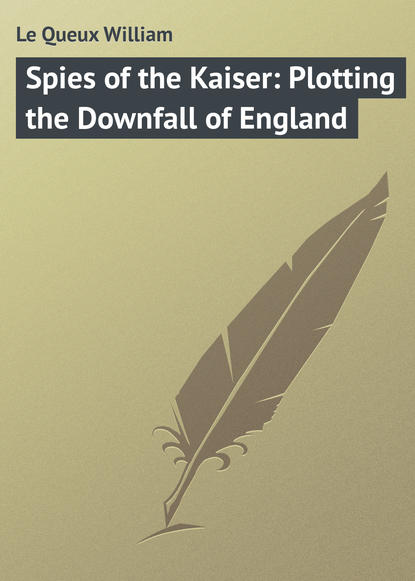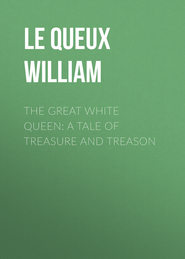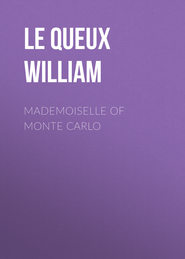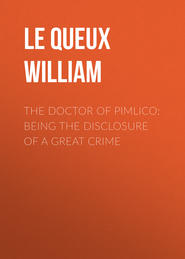По всем вопросам обращайтесь на: info@litportal.ru
(©) 2003-2024.
✖
Spies of the Kaiser: Plotting the Downfall of England
Настройки чтения
Размер шрифта
Высота строк
Поля
The cutting wind chilled us both to the marrow, for a white rime had gathered on the ground. The only sound we heard was that of the measured footsteps of another constable, which advanced and then died away again. There was, however, no sign of the German spy.
"To get in by the door yonder would be impossible. Therefore, he would try the roof," my companion remarked.
"You're right," I said. "You remain down here and watch while I try and get up above."
So I left him, and after considerable difficulty succeeded in gaining the roof of the shed adjoining, crouching in the gutter between the sloping roofs of the two sheds.
On each side of me sloped upwards skylights which lighted the interiors of the building-sheds, but all were thickly coated with a composition of dockyard dust and soot, which had been poured forth from many a warship's funnel as well as from the dozens of furnaces around. All was dark below; therefore I could see nothing.
I had been in my elevated position for fully twenty minutes before I was prompted to creep along to the further end of the gulley, where, to my surprise, I saw that close to where I stood two panes of glass had been neatly removed and laid aside.
Through the hole I gazed down into the interior of the shed, when I was startled to see the small glow of an electric lamp in the hand of the man of whom we were in search.
He was standing beside the long, spindle-shaped hull of a new submarine boat which lay on a very elevated set of stocks on the far side of the shed. Another boat similar, but not so nearly complete, lay at the bottom of the dock alongside her.
As Karff with his electric lamp moved slowly and noiselessly along, carefully examining England's newest submarine, which rumour had said was the most silent and perfect craft of its kind, I was able to make out vaguely that, differing considerably from photographs of other submarines I had seen, the boat on the elevated stocks had a bow which ran out into a kind of snout, while instead of the usual small circular or oval conning-tower she had what looked like a long, narrow superstructure running along the greater part of her length. This, however, was much higher forward than aft. She seemed, too, to have a great number of propellers.
I watched the man Karff making some rapid memoranda, and so occupied was he with his work that he never looked upward. Had he done so, he would certainly have detected my head against the sky.
In a manner which showed him to be fully acquainted with the construction of submarine vessels, he moved to and fro, examining both boats. Then, after about half an hour's minute investigation, he seated himself upon a bench and with his little lamp shaded to throw no reflection he took out a piece of paper and leisurely made a rough sketch of England's newest war-craft, both side and horizontal views.
Leaving him thus occupied, I descended to Ray, and finding him secreted near the water's edge, described what I had discovered.
"Good!" he exclaimed. "So I was not mistaken in that cryptogram after all! We will allow the fellow to complete his work and then compel him to disgorge his notes. They will furnish us with very excellent evidence."
So we waited, keeping our eyes fixed upon the spot where he must descend, and hardly daring to breathe lest we should prematurely alarm him.
The Dockyard clock chimed three, but the spy had not emerged. After another half-hour of watchful silence I saw that Ray began to be anxious. At last the bell rang out four, and scarcely had the last sound died away when we were startled by a splash near us, and next moment discerned a man in white shirtsleeves swimming away.
"Why! That's him!" I gasped. "He's cut a way out of the side of the shed!"
But next moment a boat shot forth from the darkness pulled by a woman who had apparently been waiting close by. The woman was Vera!
In a moment we were both down the steps and pulling in the boat towards the swimming man, who, we saw, was being rapidly approached by a second boat which had also been in waiting until the chiming of the clock.
The spy was exerting every muscle to reach the boat, but we soon overtook him.
Ray called upon him in German to surrender, but he refused, and kept on. Quickly, however, we cut him off from the boat which he was trying to reach, while the rower, seeing the discovery of his friend, pulled away into the darkness.
For some time the spy struggled on, but at last, abandoned and exhausted, he was compelled to obey us and come aboard in order to save his life.
Half dead and helpless he submitted to our search, when in his belt, preserved in an oilskin pocket, we discovered the memoranda and the drawing which I had seen him prepare.
The man, sullen and half drowned, refused to make any statement, though he could speak English well and write it perfectly, as shown by the note on his plan of the new boat; therefore we landed him at the Stony Steps across at Gosport. Before we left him we gave him to understand that if he did not at once leave the country he would be arrested. Yet so absurd is our law that I doubt whether we could have given him in charge even though we had wished!
We rowed back across to the landing-stage at Portsmouth Harbour Station, and after we had seen Vera safely home we returned together to the "Queen's" at Southsea, where, in the secrecy of Ray's bedroom, we examined the spy's plan of the new submarine, and read his memoranda, which were in German, but which translated were as follows:
"Report by Leon Karff, late foreman-fitter at Kiel Dockyard, on Submarine 'F 2,' now building in Shed No. 4, Portsmouth Dockyard.
"This boat would appear to me to be of about 700 tons displacement when complete, possibly rather over. She is, as far as I am able to measure, about 180 feet long with an extreme beam a little forward of amidships of 20 feet. She is fitted with three propeller shafts with three small four-bladed propellers on each. As she is provided with what appear to me to be some kind of turbine engines, I imagine that the centre shaft is for going astern only. The propellers on this shaft seem to be attached in such a way that they could be 'feathered' by suitable gearing on board so as not to retard the vessel's way when going ahead. The engines of this boat are of a type which I have never before seen. I imagine that they are a combination of the new 'gas-producer' engine and the turbine system, the explosion of the combined gas and air being split up and passing into the turbine through a number of different channels simultaneously. This would be a very economical system if the necessary power can be obtained, and would be much safer for use below than petrol engines.
"The boat is evidently intended to operate a good deal in an 'awash' position, for there is fairly thick armour-plating over the greater part of the upper side of the bow, while the fore end of the superstructure is made of two 6-inch Krupp steel plates meeting at an acute angle, and so forming a kind of stem when the boat is moving in this way. The space enclosed between these two plates is evidently intended to be used as the conning-tower. Here there are a periscope, steering-wheel, voice-tubes, and everything necessary for the control of the vessel. There are two horizontal propellers or fans, which seem to be driven by electricity derived from an installation of accumulators, and which are certainly intended to secure horizontal immersion, so the vessel will not plunge or dive, but immerse herself horizontally by means of these propellers, which, by the way, work in vertical shafts running completely through the boat, one forward and the other aft, as was the case in the Nordenfeldt, Waddington, and other early submarines.
"Forward there is an air-lock and diving-chamber, as in the 'Lake' boats, so that divers can get in and out of the vessel whilst under water. It would also afford a means of escape for the crew in the case of accident. This is further provided for by a detachable boat or caisson at the after end of the superstructure capable of holding ten men, I should say, or possibly a dozen. There are also appliances which I suppose are telephone buoys for communicating with the surface. There are six torpedo tubes fitted, one forward, one aft, and the others two on either broadside. And there seems to be provision for six other torpedoes of the 18-inch type.
"There is a long rudder for ordinary steering, and four horizontal ones or planes which are placed abreast the horizontal screws and which, I imagine, act automatically in conjunction with them, as they seem to gear up with the shafts for these propellers. There is a big safety detachable weight which fits loosely into a recess amidships, and four broad wheels with ball bearings which do not fold up as in the 'Lake' boats, but always protrude nearly half their diameter. After all they would not obstruct her way when water-borne more than a keel – or very little more. They are quite independent and unconnected with the interior of the vessel, which while resting on them would receive forward impetus from her propellers. In the 'awash' position she would offer a very small and almost invulnerable target."
"Well," I said, marvelling at what we had translated. "What induced you to believe that the cryptogram had any reference to the new submarine."
"Those figures '6.11' puzzled me greatly," he replied; "but at last I deciphered them as 'F. 2' – F being the sixth letter of the alphabet – the number of our newest and most formidable submarine, which was being kept such a strict secret by the Admiralty. 'Royal Pier' is the name of the hotel in which Steinheim stayed at Southsea, and 18 the number of his room. From facts I elucidated, it was made plain that Max Steinheim was about to embark upon the investigation, being in secret communication with Hartmann, and was to meet Karff at Charing Cross Station. This Steinheim had already, by an ingenious device, secured from a private of engineers named James Ward – whom I have seen – certain information regarding the new boom defences of Portsmouth Harbour. Ward, whose home is at Great Weldon, suddenly discovered to his horror that the man was a German spy, followed him to Guildford, attacked him in the train, and left him for dead. For that reason Steinheim has refused to make any statement to the police. When I saw Ward a week ago, he explained how innocently he had fallen into the trap which the cunning Steinheim had laid for him."
"The evidence you have here in black and white will surely prove convincing," I remarked. "You will go and see Steinheim again, I suppose? He is still in the hospital."
"No. We shall remain silent. To show our hand will only place Hartmann on the alert. To do that is needless. We have prevented the plan of our new submarine going to Germany, and for the present that is sufficient."
And my friend drew up the blind and gazed out upon the rosy dawn across the water.
CHAPTER III
THE BACK-DOOR OF ENGLAND
"Well, that's rather curious," I remarked, closing the door of the old oak-panelled smoking-room at Metfield Park, and returning to where my friend Ray Raymond was seated.
"Was anyone outside the door?" he asked, quickly on the alert.
"Mrs. Hill-Mason's German maid. You remember, Vera pointed her out yesterday."
"H'm! and she was listening – after every one else has gone to bed!" he remarked. "Yes, Jack, it's curious."
It was past one o'clock in the morning. Two months had passed since the affair down at Portsmouth, but we had not been inactive. We were sitting before the great open fireplace where the logs were blazing, after the rest of the men had taken their candles and retired, and had been exchanging confidences in ignorance of the fact that the door remained ajar. I had, however, detected the frou-frou of a woman's skirt, and creeping across to the door had seen the maid of one of the guests disappearing down the stone passage which led to the great hall now in darkness.
Metfield Park, three miles from Melton Constable, in Norfolk, the seat of the Jocelyns, was a fine old Tudor place in the centre of a splendid park, where the pheasant shooting was always excellent. Harry Jocelyn, the heir, had been with us at Balliol, hence Ray and I usually received invitations to the shooting parties. On this occasion, however, Vera Vallance with her aunt, Mrs. Mortimer, had been invited, much to Ray's satisfaction.
Among the party was a well-known naval officer, captain of a first-class cruiser, two military officers, and several smart women, for both Sir Herbert and Lady Jocelyn moved in a very smart set. Several of the ladies had joined us in the smoking-room for cigarettes, and the conversation around the fire had been mainly the usual society chatter, until at one o'clock every one had left for bed except our two selves.
Over the great fireplace were the arms of the Jocelyns carved in stone, with the date 1573, and in the corner near the window was a stand of armour upon which the dancing flames glinted ever and anon. Through the long uncurtained window shone the bright moon from over the park, and just as I reseated myself the stable clock chimed the half-hour.
We had been there four days, and the sport had been excellent. On the previous day Ray had excused himself on account of the bad weather, and had spent the hours mostly with Vera.
It was of how he had employed his time that he had been telling me when I had discovered the eavesdropper.
"I wonder why our conversation should prove so interesting to that maid?" he remarked thoughtfully, gazing into the fire. "She's rather good-looking for a German, isn't she?"
"Yes," I said. "But who is this Mrs. Hill-Mason? She seems a rather loud and buxom person, fond of the display of jewellery, dark, somewhat oleaginous, and devoted to bridge."
"Harry says his mother met her in Cairo last winter. She's one of the Somerset Masons – half-sister to the Countess of Thanet."
"Oh, she is known, then?"











